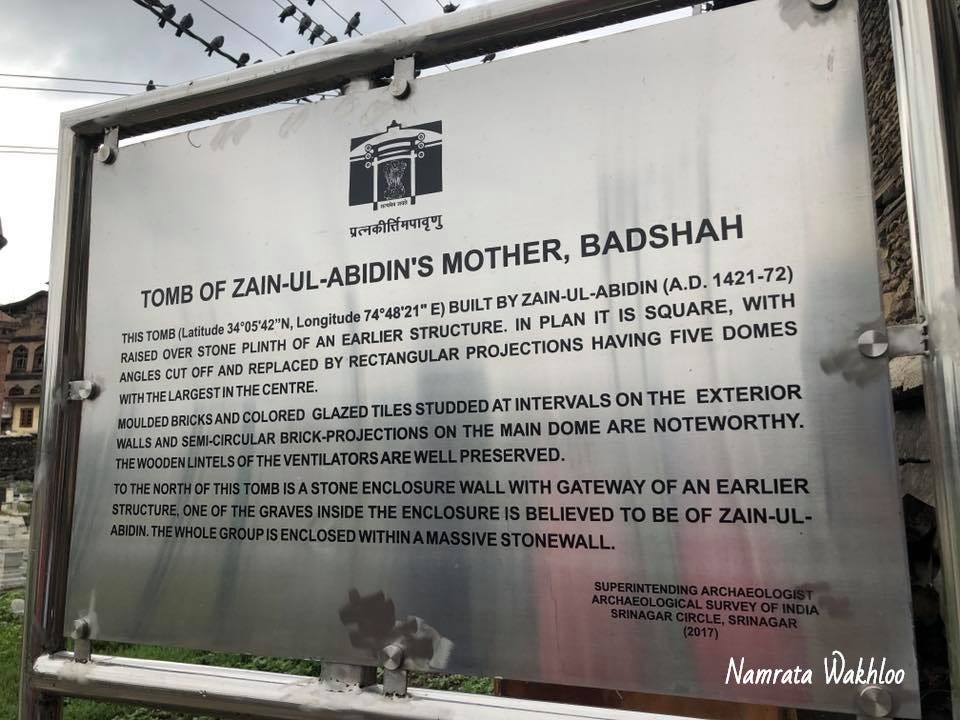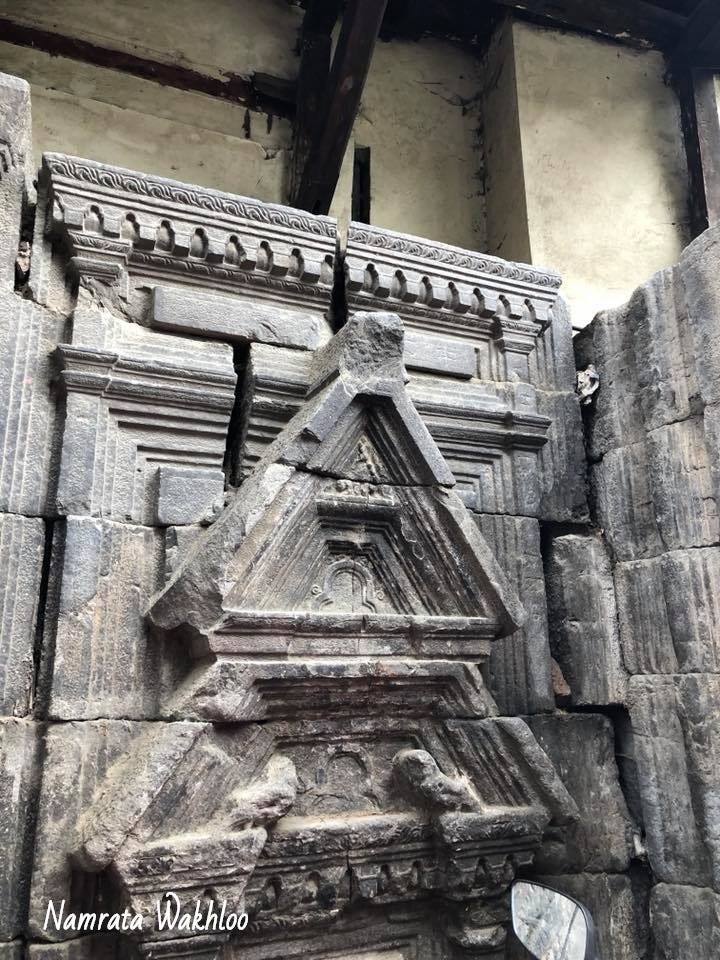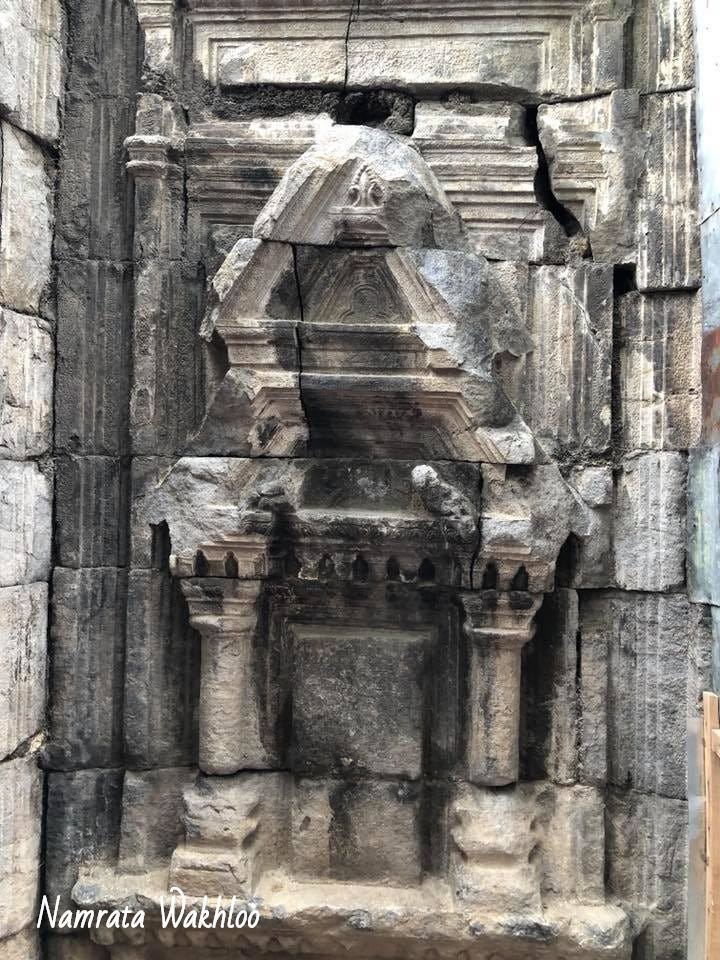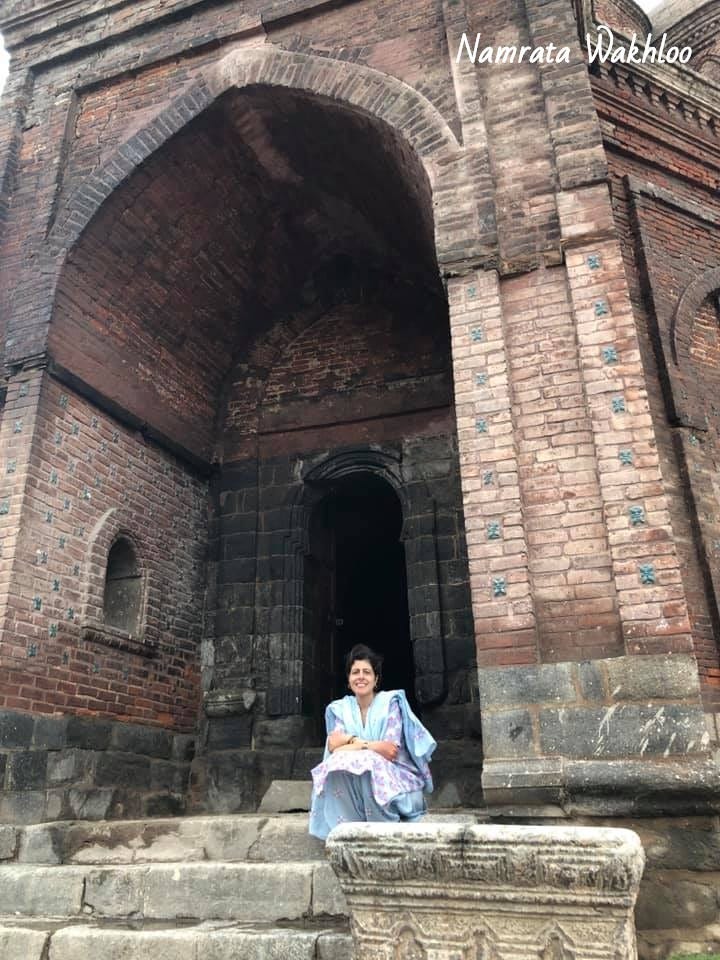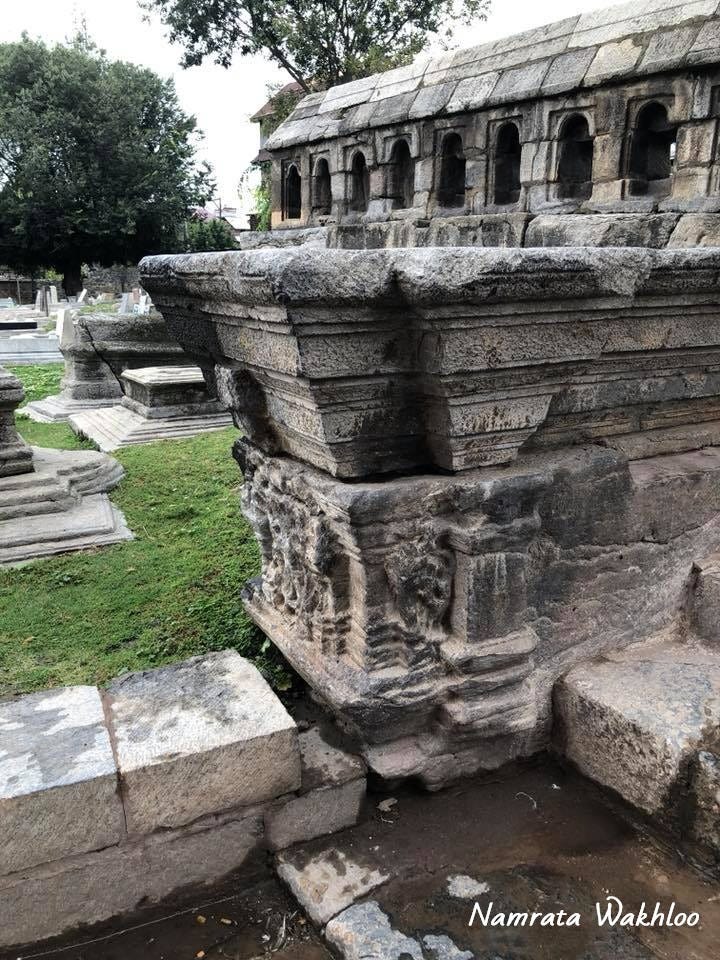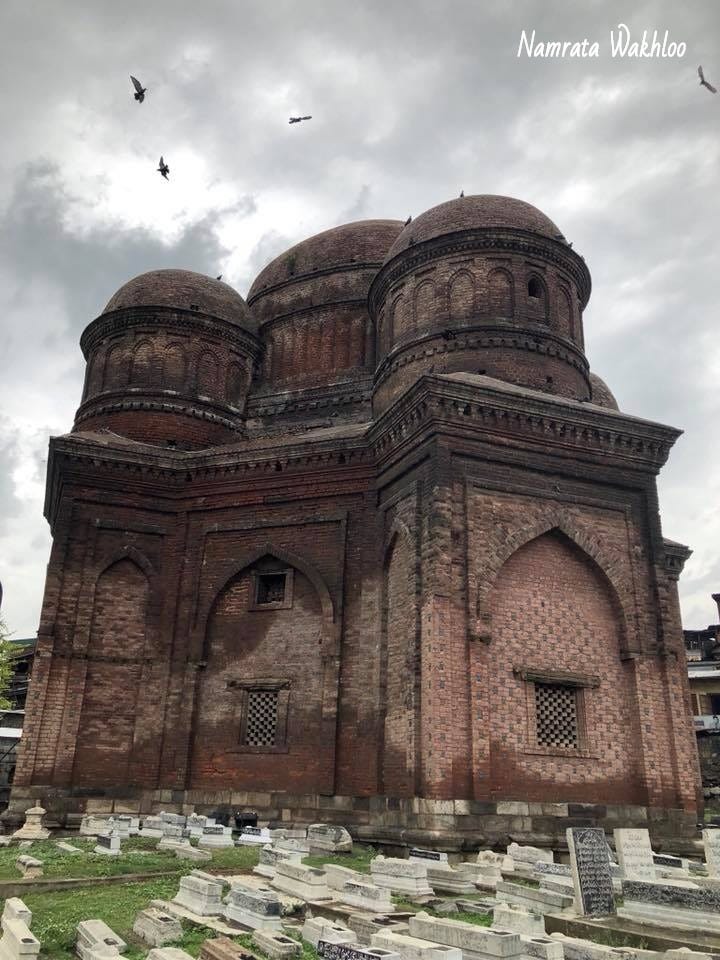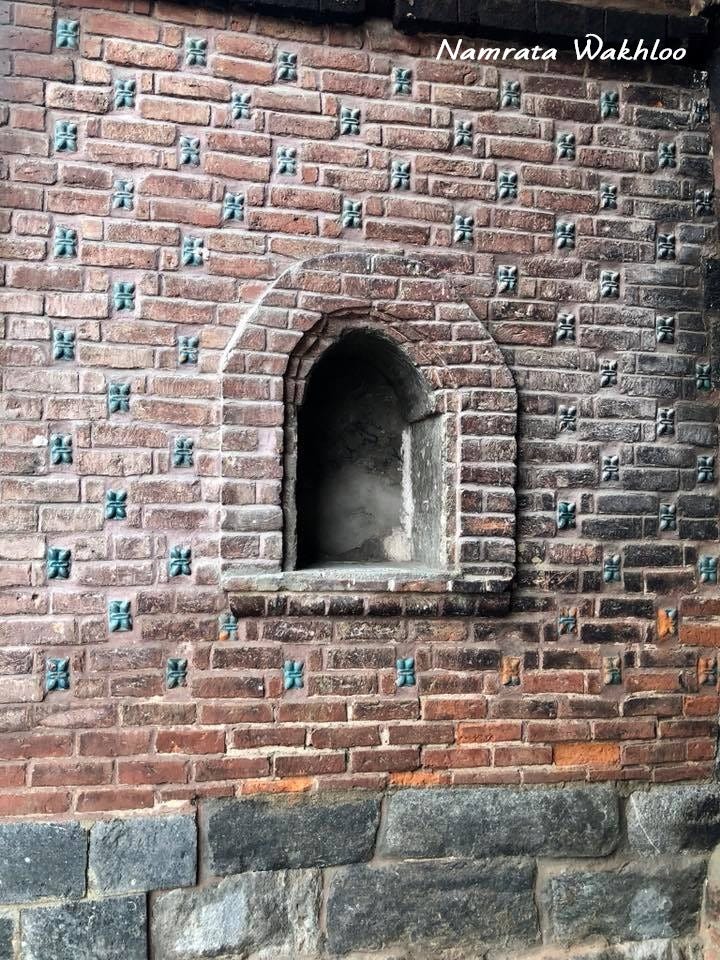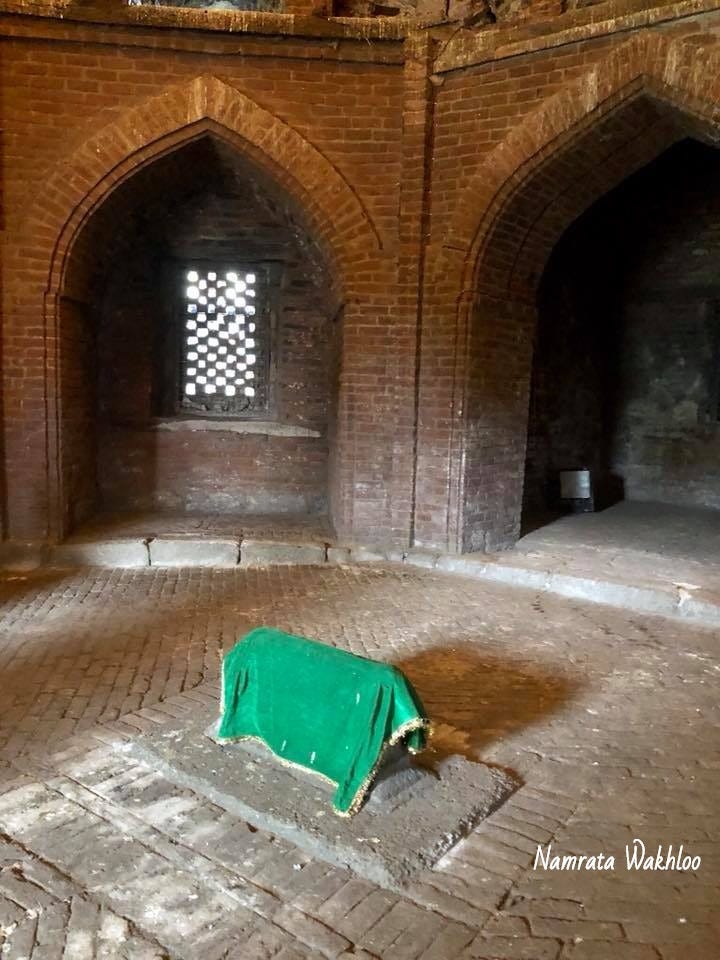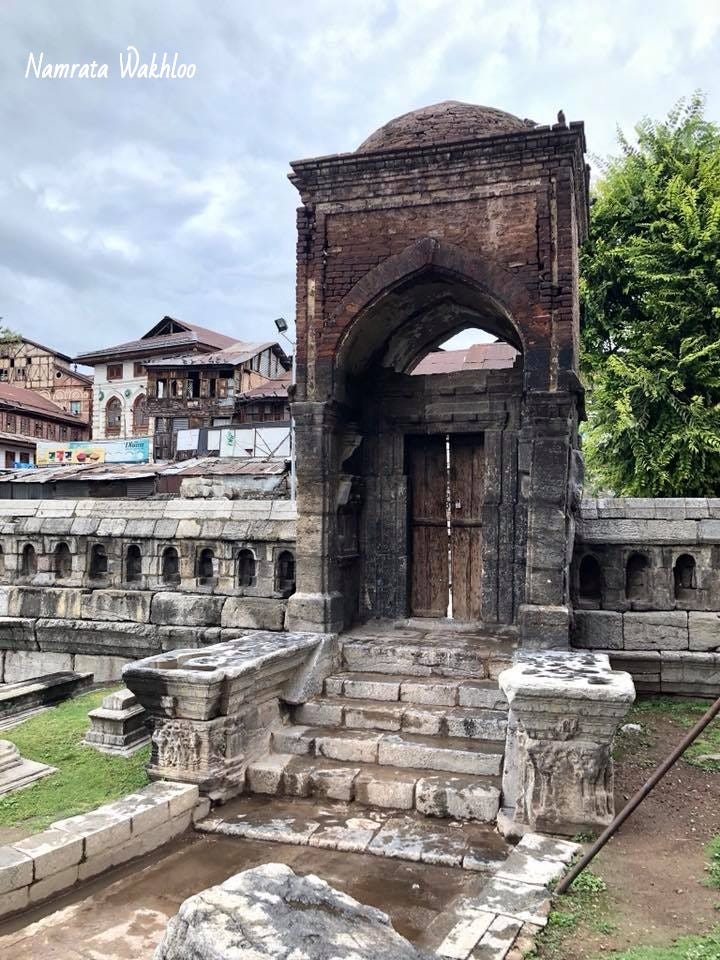The Badshah of Kashmir
Srinagar downtown, located on the banks of Jhelum, was settled more than 2000 years ago in 6 BCE by Raja Pravarsena. It is about 5 km from the city centre. Normally, not on the tourist circuit, even the locals from Srinagar usually visit only for two things — to pay obeisance at the various shrines there or to make some big purchases of spices, cloth, grain and copper utensils as it has the biggest mandi of the city.
As a child, I would occasionally accompany my father to his work in Maharaj Gunj, in downtown Srinagar. The old city, which is also called Sheher-e-Khaas has a big trading community and is quite densely populated, as this is where the city took birth from. Ours was one of the oldest businesses in the Valley and it operated from a very prominent location there, right next to the Badshah tomb. It has existed at that very location for more than 150 years, since my great grandfather’s time. Our family’s long presence in that place, resulted in our family name getting associated with name Badshah. It is still like a second surname and very few people know us by our actual clan name.
So, since I knew the background behind the name, every time, that I saw this tomb, I would be intrigued to know what it would be like, inside. It looked quite imposing yet kind of deserted and I don’t think anybody from friends or family had ever gone in.
It was only in 2018, when, on one of my visits to Srinagar, I had requested a friend who worked with INTACH, Srinagar, to accompany me on a tour of the shrines in the old city. When we were done with the shrines, he casually asked me if I would like to see the Badshah Tomb, as we walked past it. Pat came my response — Yes!
Sultan Zain-ul-Abidin, popularly called Badshah (Bod — big and Shah — King) was the eight king of the Shah Miri dynasty in the Islamic-era of Kashmir. He is one of the most popular rulers in the history of Kashmir, who ruled from 1420-1470 AD. Known for his tolerance and just rule, Badshah reversed all the oppressive policies of his father Sultan Sikander, towards the Brahmins (also known as Pandits) of Kashmir. Sultan Sikander had earned the title of Sikander Butshikan for he was an iconoclast, who took great pleasure in demolishing the places of worship of the Brahmins. Not able to tolerate the extreme torture of Butshikan, many Pandits fled Kashmir to save themselves from his persecution.
There were very few Pandits who were employed in the royal service but the one who exerted an everlasting influence on Badshah was Pandit Shri Bhatt. It is well known that the king once suffered from a chronic boil that would not heal. It was after all his personal physicians had tried their cure and failed, that someone advised him to consult a very capable Pandit physician called Shri Bhatt. The community of Pandits was well known for its knowledgeable scholars, historians and physicians but all lay low as they had been persecuted for practising their vocation openly in the past. Badshah summoned Bhatt to the royal palace and sought his cure, which Bhatt was easily successful in achieving. The king was so impressed by him that he appointed him as his chief physician. Going forward too, he really valued Bhatt’s expertise, and offered him great fortune and riches. Bhatt, however, refused the material wealth and in return, asked him to rehabilitate the Pandits again. Badshah was only too happy to do that and made the lives of the Pandits better. He sent envoys to mainland India to get the Brahmin community back, as he knew the value that they brought to the Kashmiri society. Many temples which had been demolished in the previous reign were rebuilt and permission was granted to build new temples. Killing of cows was made a punishable offence and Jaziya on Hindus was abolished by him. The Sultan was a lover of music. He had also spent a lot of time as a royal guest in Samarkand, where he learnt to appreciate fine arts. It is he, who is supposed to have got the art of shawl and carpet weaving, papier mache’ and paper making from Central Asia to Kashmir. He appointed Sanskrit scholars in his court like Jonaraja, Srivara, Bodhi Bhatt and Soma Pandit along with Persian scholars like Maulana Kabir, Qazi Mir Ali, Mullah Ahmad and Mulla Hafiz Baghdadi. Badshah also tried to grow crops like sugarcane in the drier plateaus or Karewas of Kashmir to make it available at cheaper rates. Sugar, then, had to be imported and stocked for six months in the Valley. Badshah saw how famines and floods used to often create havoc in Srinagar, so he got new parts of the city developed and new canals made (Nalla Mar was one prominent one).
Sultan Zain Ul Abdin Badshah’s rule is considered as the golden period in the history of Kashmir as it was the most progressive phases that the place had ever seen. The historian, Jonaraja, has documented Badshah’s efficient and kind rule in his chronicles. “A religious and simple person with no vices”, is how the historian describes him.
Sultan Sikander had laid a cemetery for the members of the royal family on the banks of river Jhelum, at the place which is now called Maharaj Gunj. In this graveyard, is the Badshah Tomb. Like most people, I too believed this to be the tomb of Zain-ul-Abidin Badshah himself. However, it was only when I read the plaque inside, did I realize, that it was the tomb which Badshah had got built for his mother.
The monument is in the middle of a very congested market as well as a residential neighbourhood. As I stepped inside the main entrance, I was surprised to see carved stone structures on either side of it, which suggested that these must have been the remains of an older Hindu or Buddhist structure. We walked over a stone-paved pathway through a cemetery to reach the main tomb which stands strong, even 600 years later!
Its quite evident that the brick tomb has been built on an previously existing stone structure, the background of which is not known. The cut and chiseled carved stones of the past make it strikingly similar to Martand and Avantiswamin temples in Kashmir, although many historians suggest that it could have been a Buddhist structure.
The present architecture is quite typical of the Central Asian style. The tomb is octagonal with five domes as its roof, with the central dome as the biggest and the other four smaller, but of same size.
The use of coloured glazed tiles staggered along with moulded bricks, gives the exterior walls a decorative feel. The semi-circular brick projections on the main dome are noteworthy too.
The entrance to the main tomb leads into a dimly lit enclosure with arches on all walls. The chamber is almost bare and very modest with the simple stone grave of the empress in the centre. The wooden lintels of the ventilators are still well preserved. A lone caretaker was present even though there was nobody else visiting, but us. I am not even sure, if there are regular visitors here.
While in the front of the tomb is a graveyard for commoners, to the North of it, separated by a wall with a separate entrance, is where the royals lay buried. This is also the final resting place of Badshah himself.
Finally, I would say, although it took me a good part of my life to ultimately know the background of this monument built by the fabulous Sultan of Kashmir, whose name our family still bears, it was well worth the wait!
Tips for travellers —
1. Do not skip this monument of your Srinagar itinerary
2. There is no ticket
3. Since its a mausoleum, please dress modestly
4. You can take a 20 min ride in a taxi or autorickshaw to reach this place from Lal Chowk.
For any feedback/queries, you may write to me at namrata.wakhloo@gmail.com




